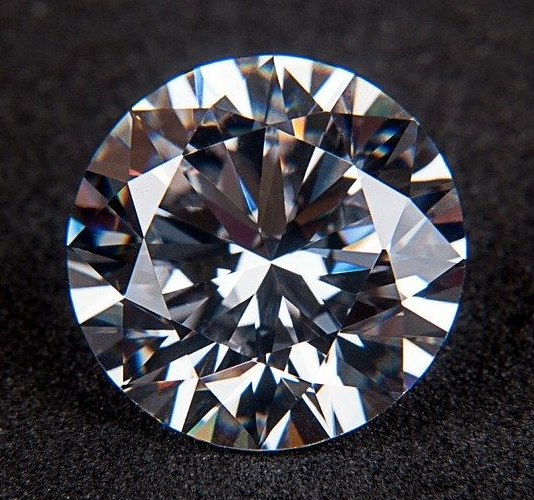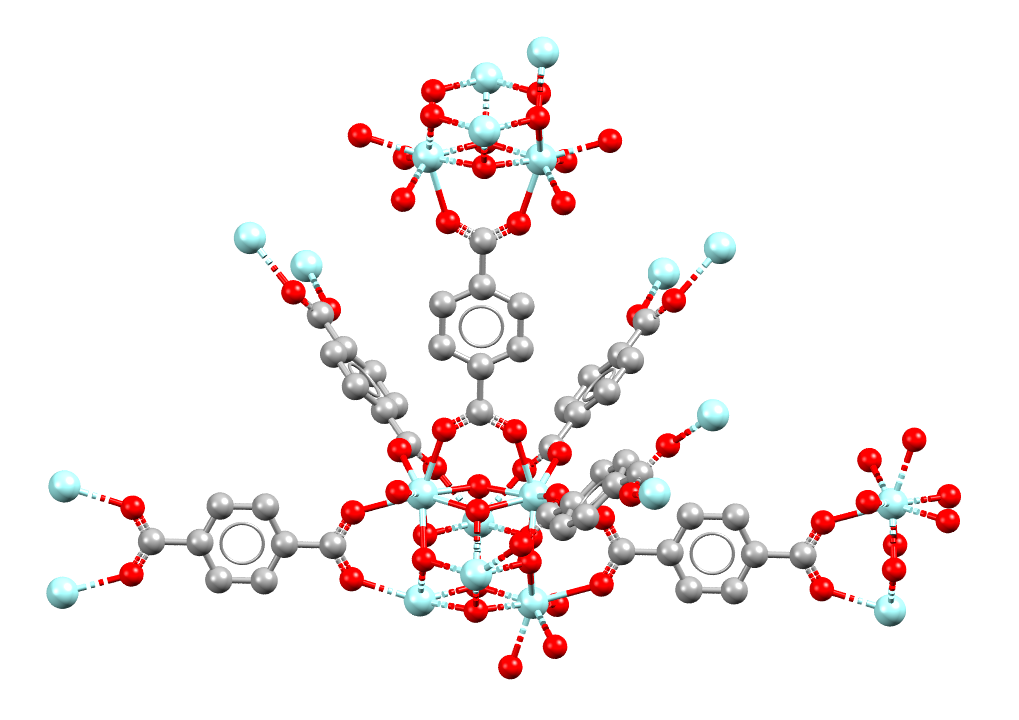Zirconium
Zirconium:

Image of cubic zirconia, a crystalline form of zirconium dioxide
Facts about Zirconium:
- Zirconium: Zirconium is a lustrous, greyish-white metal that is solid at room temperature.
- Fun fact about Zirconium: Zirconium is typically found in S-type stars which feature bands of zirconium oxide. The primary commercial source of Zirconium is the mineral Zircon, which is also the source of the element’s name.
- Chemical symbol: Zr
- Atomic number: 40
A crystal structure containing Zirconium:

Image showing a Zirconium (shown in light blue) based Metal Organic Framework
Facts about this structure:
- Formula: (C48 H28 O32 Zr6)n
- Structure name: catena-(hexakis(μ4-Benzene-1,4-dicarboxylato)-tetrakis(μ3-hydroxo)-tetrakis(μ3-oxo)-hexa-zirconium unknown solvate)
- Fun fact about the structure: This structure is the UiO-66 Zirconium based Metal Organic Framework (MOF) with exceptional stability. The MOF is named UiO due to its discovery at the University of Oslo.
- CSD refcode: RUBTAK (What’s this?)
- Associated publication: J.H. Cavka, S. Jakobsen, U. Olsbye, N. Guillou, C. Lamberti, S. Bordiga, K.P. Lillerud, Journal of the American Chemical Society, 2008, 130, 13850, DOI: 10.1021/ja8057953
More about Zirconium:
Zirconium was identified in 1789 in the mineral zircon by Martin Heinrich Klaproth. While the name zircon is derived from the Arabic zargun, meaning gold-hued, zircon occurs in many colours. Zirconium has good strength at elevated temperatures and is resistant to corrosion by many acids, which lends to its use in nuclear reactor cores and where corrosive agents are involved. Oxides of Zirconium have high refraction index and rank high on the hardness scale and are therefore good gem materials. The oxides are also used for laboratory crucibles, furnaces and can be formed into ceramic knives. Zirconium compounds are used for medical applications in some dental implants and crowns, knee and hip replacements, and other prosthetic devices.
Learn More About the International Year of the Periodic Table (IYPT) in Crystals Project:
This project (#IYPTCrystals) is part of the International Year of the Periodic Table celebration (#IYPT2019), read more about the project here.
You can follow us on social media; search for #IYPTCrystals or follow The CCDC on X @ccdc_cambridge on Facebook ccdc.cambridge, on Instagram ccdc_cambridge or on YouTube CCDCCambridge.
Understand some of the terms and concepts used with our Frequently Asked Questions page here.
A 3D visualization showing Zirconium in a real crystal structure: